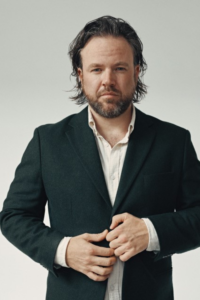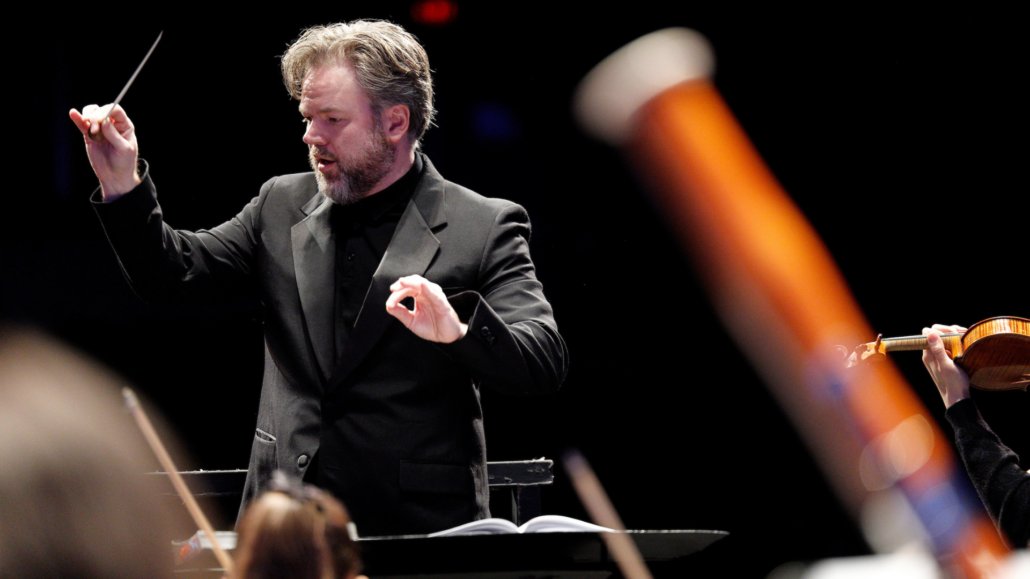 Christian Kluxen, conductor
Christian Kluxen, conductor
Now in his ninth season as Music Director of the Victoria Symphony, Christian Kluxen is also in his third season as Principal Guest Conductor of the Turku Philharmonic Orchestra in Finland, following a five-year tenure as Chief Conductor of the Arctic Philharmonic in Norway.
Kluxen has been described in the press as “a dynamic, charismatic figure” who “forms the music with an impressive vertical power of emotion and a focus on the grand form”, conducting “with exemplary clarity and a heavenly warmth”. He is recognized for his sincere and transparent leadership, innovative programming and his bold, imaginative and energetic interpretations, showcased both in his MD and guest work.
Alongside his many and varied commitments with the Victoria Symphony and Turku Philharmonic Orchestra, recent and forthcoming guest engagements include Orchestre de Chambre de Lausanne, Pacific Symphony, Prague Radio Symphony Orchestra, Copenhagen Philharmonic, Odense Symphony, and Norrköping Symphony. A fruitful and inspiring relationship with the Arctic Philharmonic, whom Kluxen led for five years as Chief Conductor, resulted in numerous exhilarating performances of a wide variety of repertoire, as well as several acclaimed recordings.
Kerson Leong, violin
Kerson Leong has been described as “not just one of Canada’s greatest violinists but one of the greatest violinists, period” (Toronto Star). Forging a unique path since his First Prize win at the International Yehudi Menuhin Violin Competition in 2010, he continues to win over colleagues and audiences alike with “a mixture of spontaneity and mastery, elegance, fantasy, intensity that makes his sound recognizable from the first notes” (Le Monde).
His latest album, featuring the Britten and Bruch violin concertos with the Philharmonia Orchestra and Patrick Hahn for Alpha Classics, was released to widespread critical acclaim, including having been awarded ‘Editor’s Choice’ by Gramophone, ‘The Strad Recommends’ by The Strad, and the ‘Choc de Classica’ by Classica as well as five-star recommendations from the Sunday Times and Diapason among others.
Recent season highlights include solo performances with such ensembles as the Royal, Oslo, Brussels, Kansai, and Liège Royal Philharmonic Orchestras, the Seattle, Singapore, Toledo, Montreal, Tucson, Bilkent, Toronto, Vancouver, Stavanger, and Wuppertal Symphony Orchestras, a tour of Sweden with the Camerata Nordica, a recital tour of the Midwestern United States, and recording John Rutter’s Visions with the composer himself and the Aurora Chamber Orchestra, after giving its world premiere in London, UK.
As a sought-after soloist, he was hand-picked by Yannick Nézet-Séguin to be his artist-in-residence with the Orchestre Métropolitain during the 18/19 season and has performed in such prestigious venues as Carnegie Hall’s Stern Auditorium, Wigmore Hall, the Auditorium du Louvre and the National Center for the Performing Arts in Beijing.
As a passionate chamber musician, he has performed at such international festivals and concert series as the Verbier Festival, Rheingau Musik Festival, Gstaad Menuhin Festival, Festspiele Mecklenburg-Vorpommern, Flâneries musicales de Reims, and Bergen International Festival among others.
Passionate about pedagogy and music outreach, he has been invited to give masterclasses and teach at various festivals and universities including the Indiana University Jacobs School of Music, the Sibelius Academy in Helsinki, the Gustav Mahler Academy, the Domaine Forget Festival Academy, the University of Ottawa, and Dalhousie University among others.
Fostering a significant audience away from the concert hall as well, he is cementing his noteworthy role in reaching young people, aspiring musicians, and potential music lovers alike with his art in creative and engaging ways on social media. He is an associate artist of the Queen Elisabeth Music Chapel in Belgium, where he was mentored by Augustin Dumay.
He has always been keen on making connections between music and other fields. Ever since his dad started introducing him to physics concepts about string resonance, they have strongly influenced his playing and philosophy on sound production. Together with his dad, he has given lectures about this subject in places such as the Central Conservatory of Music in Beijing, the Barratt-Due Music Institute in Oslo, and various universities in California.
Kerson performs on the ‘ex Bohrer, Baumgartner’ Guarneri del Gesu courtesy of Canimex Inc, Drummondville (Quebec), Canada.



 Christian Kluxen, conductor
Christian Kluxen, conductor